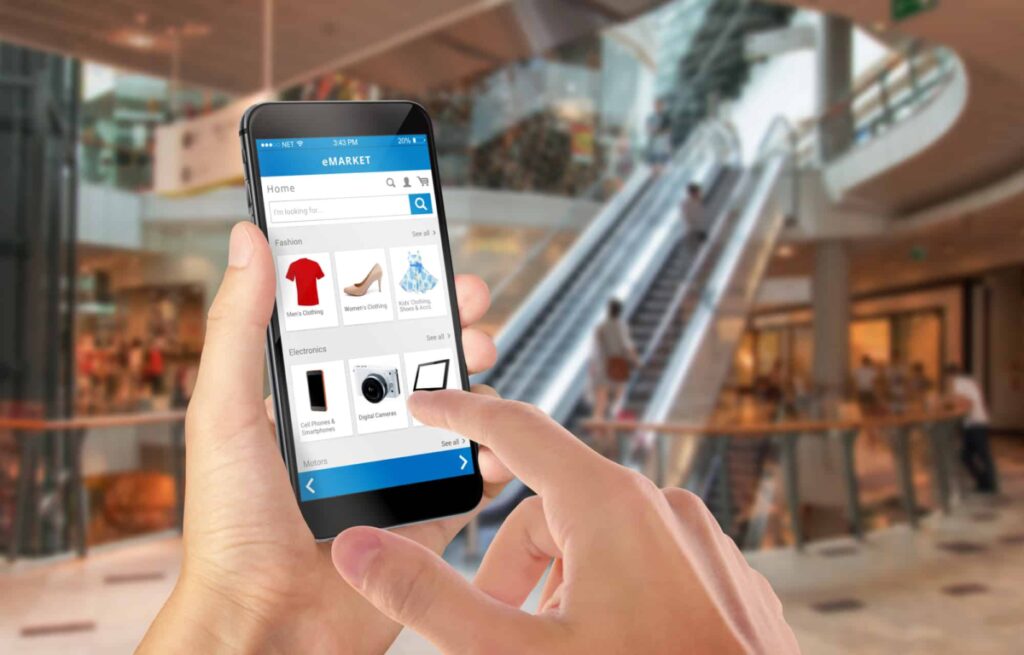
Business owners who run brick and mortar stores may be quick to dismiss digital marketing efforts relying on the more established and historical means of advertising such as billboards, radio and television ads, and word of mouth. But, digital marketing efforts are not just for web-based or non-traditional businesses. Brick and mortar stores can keep up with the times and find customers they never knew existed with an effective digital marketing plan.
One of the newest features in digital marketing plans are ads specific for converting online customers to customers who visit your store. This has become so popular that both Google and Facebook have recently launched programs in their advertising products to help stores bring in more foot traffic with targeted digital advertising. Let’s take a closer look at both of these new features on their respective platforms:
Facebook:
Facebooks has launched store traffic advertising which allows pages to create Facebook ad campaigns with the express goal being to increase foot traffic and boost sales at physical stores. When creating a store traffic ad campaign, you can:
- Customize your ads to pull local information for each of your stores.
- Use a store locator map card and call-to-action buttons likeGet Directions to encourage people nearby to visit the closest store.
- Deliver ads to people within a set distance of each store.
This is an effective type of advertising if you have multiple locations. If you want to increase foot traffic to just one store, Facebook recommends utilizing thereach advertising objectiveinstead. Using this method, you don’t need to set up multiple store locations, but you can still use geographic targeting to reach people within a set distance of your store.
GoogleAds:
GoogleAds has launched store visits. Store visits was created to help measure the value of online ads by taking into account the additional conversions that happen offline. If you currently utilize GoogleAds, Google can use your analytics to pull data such as phone location history or ad clicks made by your target demographic to create better targeted ads to drive in-store conversions. This data will help you understand which ad campaigns, keywords, and devices send the most people to your store so you can optimize your account to increase ROI.
Google says they use a hybrid approach with a variety of signals in order to measure visits. Some of those signals may include:
- Google Earth and Google Maps Street View data.
- Mapping of the coordinates multiple locations.
- Wi-Fi signal strength in stores.
- GPS location signals.
- Customer Visit behavior.
- Panel of over 1 million opted-in users provide their on-ground location history validate data accuracy and inform the modeling.
Store visits is not quite available to everyone yet, here are Google’s requirements:
- Must have multiple physical store locations in an eligible country.
- Must Receive “thousands” of ad clicks and “many” store visits every month.
- Have a Google My Business account to your Google Ads account.
- Enable location extensions.
Store visit conversions will be added to the “All conversions” column in campaign reports. Store visits are available at the campaign, ad group, and keyword level and can be segmented by device.
Whether you utilize Facebook, Google, or a combination of both – knowing this feature is readily available to you to drive foot traffic to your brick and mortar is a valuable tool in your toolbelt to grow your customer base, and in turn, your bottom line.
Let Webster Digital Marketing Support Your Digital Advertising Efforts
Webster Digital Marketing can take the burden of understanding the constant changing rules of Google and Facebook Ads, recommending and maintaining the appropriate digital ads for your business. We would love to work with you to improve your online presence!Contact us today to learn more.
